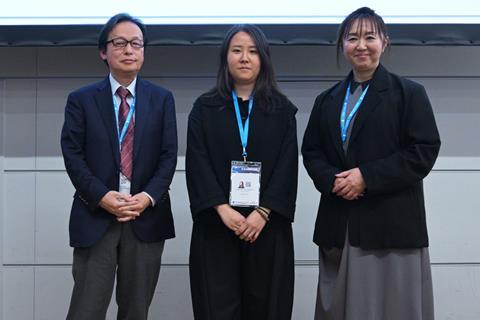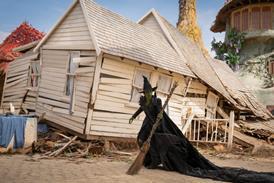
Key figures from Japanese and South Korean film bodies targeted urgent challenges and underlined the growing need for co-production in a tough period for the industry.
Representatives from the Korea Film Council (KOFIC), Japan Film Commission and Japan’s Visual Industry Promotion Organisation (VIPO) spoke on a panel at TIFFCOM, the market associated with Tokyo International Film Festival, this week.
VIPO deputy secretary general Toshifumi Makita acknowledged that the Japan location incentive (J-LOX+), which runs four application windows per year, is challenging to use year-round. Japan’s hot summers make filming broadly difficult from June to August, and the winter session of the Japanese parliament when budgets are discussed makes accessing funds challenging.
He added that conversations are being prepared with Japan’s Ministry of Economy, Trade and Industry (METI), which runs the incentive programme alongside VIPO, on how to reevaluate the scheme’s schedule in a bid to host international productions from November to March, when conditions are good for filming.
Productions such as Apple TV series Monarch: Legacy of Monsters and Wowow’s upcoming series adaptation of Neuromancer have accessed the incentive.
Makita also outlined that the co-production programme, run by the Agency for Cultural Affairs, also supports project development alongside production.
Ruriko Sekine, secretary general at Japan Film Commission, highlighted the regional incentives available in the country, which generally can be combined with the J-LOX+ incentive.
For producers, “it’s very difficult to get budget only within Japan,” said Sekine. “Of course, the national government is now supporting the content industry and trying to attract international projects and support co-productions.”
However, a big challenge is that “in Japan, everyone is [accessing] the same ‘pie’,” she said.Sekine also added that co-productions benefit Japanese crew to develop their skills further. “As a national film commission, we want the domestic industry to [gather] more funds from outside countries” to support prodution,” she added.
KOFIC manager Jinhae Park agreed that budget necessities are resulting in an increased need for co-productions. ”We used to have fruitful investment compnaies that were willing to invest in new, creative sometimes experiment projects even,” she said. ”But things changed after Covid. Now, there’s a lot less money in the [production] scene.”
Park added that co-producing with Japan was a natural fit because of proximity and time difference. “In both countries we’ve felt the rising needs for co-productions from producers, so that’s how we [KOFIC] and VIPO came up with [the Korea-Japan producers exhcange],” she explained. “We wanted to see what the possibilities would be. I think [co-production between Japan and South Korea] is quite feasible.”
Developments in South Korea include the Busan Gijang Studio complex, a purpose-built production hub, alongside KOFIC’s incentive programmes for co-production.
Representatives from both regions also said access to the respective markets was a key draw for co-production.
The panel also introduced select producers from South Korea and Japan, including South Korea’s Hyo-jeong Kim, Kihyun Kim, Joonhan Lee, Moon Sung-Joo Moon and Park Sejin Park; and Japan’s Mio Sekiguchi, Nen Hyo, Sachiko Miyase, Takeshi Moriya and Hiroyuki Yoshihara.
More than 100 TIFFCOM participants attended the panel, with approximately 40-50% representing overseas attendees, according to a VIPO representative.
This story originally appeared on Screen’s sister site Screen Global Production























No comments yet